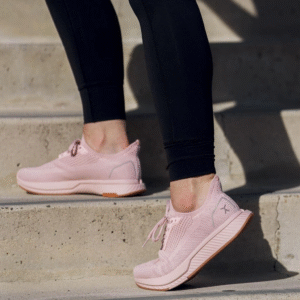For decades, athletes have turned to one recovery ritual after grueling workouts: the ice bath. Whether it’s a bucket of cold water after a marathon or a tub filled with ice cubes in a training facility, the practice has long been praised for reducing soreness and speeding recovery. But in recent years, science has started to question whether ice baths are truly helping or if they may actually interfere with the body’s natural healing process.
It’s time to take a closer look at the icy truth.
Why Athletes Swear by Ice Baths
The logic behind ice baths seems simple: after intense training, muscles feel sore and swollen. Immersing the body in cold water reduces blood flow and numbs the area, which eases pain and swelling in the short term. For athletes, this relief feels almost magical, like pressing a reset button that allows them to bounce back for the next day’s training.
Cold therapy also dulls nerve activity, which explains why soreness fades temporarily. For many, ice baths have become a ritual as much as a remedy, woven into the culture of sports and fitness.
The Science of Inflammation and Recovery
Here’s where it gets interesting: soreness and inflammation aren’t always the enemy. When you push your muscles hard, tiny microtears form in the fibers. This triggers the body’s natural repair process, which includes inflammation. Blood rushes to the area, bringing nutrients and healing cells. Over time, the muscle rebuilds stronger and more resilient.
By blunting this inflammatory process with extreme cold, ice baths may actually slow down the body’s adaptation. In other words, they provide short-term comfort but may compromise the long-term gains that come from letting the body repair naturally.
What the Research Really Says
Studies on ice baths show mixed results. Some confirm they reduce soreness immediately after workouts, while others suggest they interfere with muscle growth and strength development. For example, research on athletes who used ice baths regularly found smaller improvements in muscle size and strength compared to those who didn’t.
Why? Because the body’s repair system thrives on inflammation in the right doses. Shutting it down too aggressively may stop the body from laying down new tissue and adapting to training. It’s like cutting corners in construction: you get faster results in the moment, but a weaker foundation in the long run.
Short-Term Relief vs. Long-Term Healing
So are ice baths bad? Not necessarily. They still have value in certain situations. If you’re in the middle of a tournament, playing back-to-back games, or need to perform at your best again within hours, reducing soreness quickly may be the priority. In those cases, ice baths can buy you time.
But if your goal is long-term strength, endurance, and joint health, relying on ice baths after every workout may not be the best strategy. The soreness you feel isn’t just a nuisance; it’s part of the process of becoming stronger. By avoiding every ounce of discomfort, you may also be avoiding growth.
Smarter Ways to Recover After Workouts
Instead of rushing to the ice tub after every training session, athletes and everyday exercisers alike can adopt recovery strategies that support both immediate relief and long-term adaptation.
- Active recovery: Gentle movement, like walking, swimming, or yoga, boosts circulation without stressing muscles.
- Hydration and nutrition: Protein, antioxidants, and proper hydration fuel tissue repair.
- Sleep: The body does its most important recovery work during deep sleep, making rest a top priority.
- Heat therapy: In some cases, warmth encourages blood flow and speeds healing more effectively than cold.
- Mind-body practices: Stress management through deep breathing or meditation lowers cortisol levels, which can amplify pain and slow recovery.
These methods not only reduce soreness but also help the body adapt for the long haul.
A Balanced Approach to Cold Therapy
Rather than abandoning ice baths completely, the key may be moderation. Occasional use after especially brutal workouts or during periods of tight competition can still provide relief without sabotaging long-term progress. The problem arises when cold therapy becomes the default recovery method, used daily without considering its impact on adaptation.
For patients with chronic pain or injuries, cold therapy also remains a useful tool. It can calm inflamed joints, ease nerve irritation, and provide non-drug relief for acute flare-ups. But as a blanket solution for every sore muscle, it may be time to rethink its role.
Listen to Your Body, Not Just the Ice
Ice baths will likely remain a part of sports culture for years to come, but the conversation around them is shifting. Sometimes discomfort is the signal that your body is growing stronger.
We encourage athletes and active individuals to take a balanced approach to recovery. Use cold therapy strategically when it makes sense, but don’t rely on it as a crutch. By respecting the body’s natural healing process, you give yourself the best chance at both short-term relief and long-term performance.
Not every recovery requires an ice bath. Simple products like massage guns, heated wraps, and recovery boots amazon.com/shop/painfreelives provide targeted relief and support circulation without blunting long-term muscle growth. These tools help athletes recover smarter while still letting the body adapt and grow stronger.







